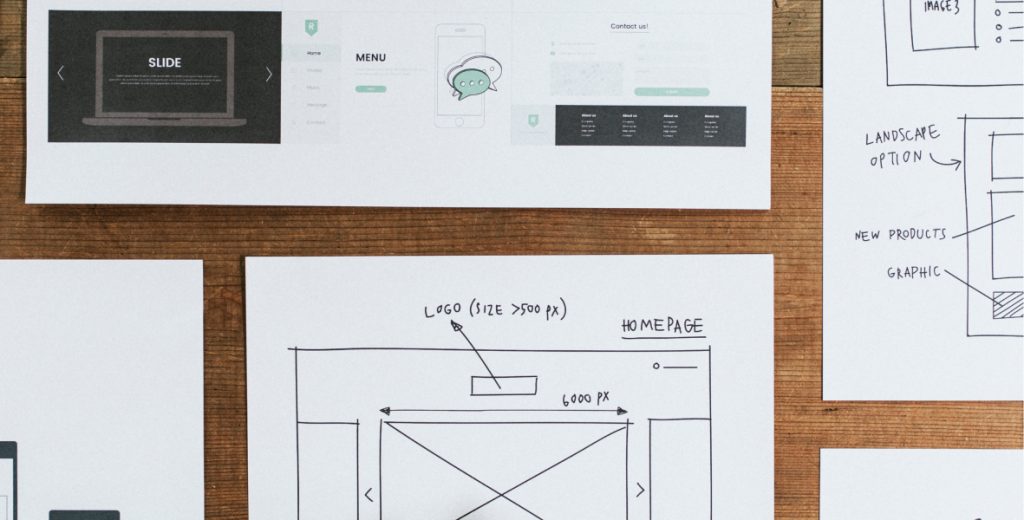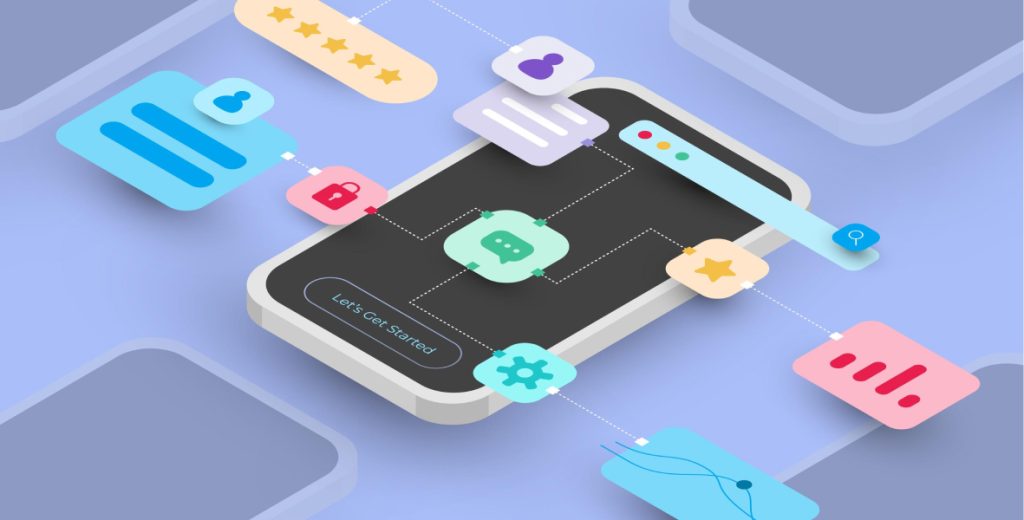For fixed-price projects with a finalized set of requirements – yes.
The discovery phase: What is it, and why is it important?

 10 minutes read
10 minutes read
Content
A good start is already 50 percent of the success in any endeavor. However, the stage that precedes the project’s onset in software development is critical for business outcomes, especially for startups, as they often only have a basic concept. The Discovery phase focuses on clarifying the project requirements, visualizing the idea, and making a preliminary implementation plan. It helps to find the answers to the following questions:
- Is the idea feasible?
- How soon can we show the product to the world (investors/target audience)?
- What resources are necessary to implement the idea?
Let’s have a closer look at the process of the Discovery phase, its deliverables, and the types of projects which would benefit from it.
What is the discovery phase?
The pre-development stage, first of all, aims to eliminate financial risks for the client and make the development process as predictable and smooth as possible. All project goals and requirements are gathered and analyzed from multiple perspectives: optimum architecture, user interface, functionality, etc., and, consequently, the best implementation strategy. Mistakes with planning may cost too much and sometimes are very hard to fix at later stages, leading to considerable delays with an MVP launch. Unfortunately, to many businesses, it means failure.
- You don’t know what toolset is optimum to implement your idea. The technical solution seems fuzzy for you.
- You are not sure the UI/UX design of your product is good enough or you need prototypes/mockups to show to investors.
- You did not work out all possible use cases – how people will use the future product.
- It is unclear how to integrate your product with other involved tools and systems (e.g., payment gateway, CRM)
- You don’t have a plan on how to scale your product in the future.
- You need a Proof of Concept (POC) – quick and dirty implementation of an idea.
- You have doubts regarding future infrastructure for your product, e.g., cloud or on-premises, cloud provider, or required hardware and software to make it work efficiently.
- You have worked out all requirements and want to know the exact price and timeline of the implementation.

What result should you expect?
- Idea visualization
- Profound understanding of the product scope
- Detailed backlog of features planned in the product
- Cost and time estimate necessary for an MVP
- Initial infrastructure costs estimate
- Pricing for third-party systems integration (if any).
- Competitor analysis
Who is engaged?
Client-side: stakeholders (decision-makers – the client’s representatives who have in-depth knowledge of the product goals and requirements, or the client themselves) must be available for meetings to provide constant feedback. Regular communication prevents misunderstandings and ensures the effectiveness of the Discovery phase.
The involvement of users (through interviews) is optional but may be very helpful for developing the product concept.
The Discovery phase team is formed depending on the project’s specifics and consists of people with diverse expertise to cover all aspects. The discovery phase goals, agreed beforehand, determine the duties of each team member.
- Business analyst
- Leads most communication – the primary point of contact from the BV side
- Helps to set business goals for the product
- Identifies all roles (users) in product, prioritizes them
- Identifies functional and non-functional project requirements and assesses them against business goals in cooperation with the client
- Drives requirement sessions
- Performs requirement analysis and prioritization
- Writes documentation
- If needed, conducts market research, user interviews, etc
- UX/UI designer
- Defines who the users or potential users are; analyses existing user research or customer data to gather information about who will use the experience.
- Identifies strengths, issues, and gaps to improve the experience.
- Uses tools, such as a heuristic assessment, to measure the performance of the UX.
- Explores users’ goals, needs, and pain points and translates them into user flows, wireframes, prototypes.
- Creates the Information Architecture for better understanding of the scope and the structure of the product.
- Provides a mood board for understanding the general look and feel of the future/upgraded product.
- Project manager
- Ensures effective communication between the client and the team
- Plans for the scope of work
- Prepares the resulting documentation
- Propose proper approach/methodology for project execution to reach client goals
- Eports status updates to the client
- Tracks progress
- Tech lead, architect
- Analyze the artifacts of the discovery phase
- Help to clarify tech requirements
- Make sure the designed business logic is technically feasible
- Initiate architectural sessions
- Perform architectural analysis
- Propose technical stack
- Write architecture vision or assessment report
- Offer the best architectural solution to make the product scalable and maintainable
- Compose and estimate the implementation road map
- Choose infrastructure (e.g., cloud provider)

How does Blackthorn Vision conduct project discovery?
Methodology
We use the Agile methodology with weekly iterations or sprints. A planning session is held at the beginning of each sprint to set a weekly goal and prioritize tasks. The team will also have daily meetings to track progress and eliminate blockers. At the end of each sprint, we present interim work results to stakeholders at a demo meeting. This transparency and constant collection of feedback back ensure the absence of discrepancies between what is delivered and expected.
Project discovery stages
1. Approval: The first step to cooperation is to specify a Master Service Agreement and a Statement of Work, which implies approving the Discovery Phase Estimate. It is then followed by a kick-off meeting where the stakeholders and the team get acquainted and discuss the action plan.
2. Requirement analysis: At this stage, we carry out several interviews with the stakeholders to gather all possible information about the future product and understand what the client wants to achieve. We also incorporate data from marketing research or user surveys if the client did them. Then, collectively, we develop a unique business model canvas for the product.
3. Research and visualization: The Discovery team performs an in-depth analysis of the collected information and the provided technical documentation, including requirements for capacity, technical limitations, integrated systems, security, etc., and compares the results to the best industry standards and competitors. The goal at this stage is to find optimum technologies and solutions for the project, document the architecture, create a roadmap and resource plan, estimate the budget, etc. It also includes UI/UX visualization (wireframes, mockups, etc.) if it is relevant for the project.
4. Presentation of the results: After processing the client’s feedback about interim results, we present the final set of documents (see below) – a commercial proposal – at a meeting. There, we also answer the client’s questions and plan further steps.


Ready to transform your idea into a clear plan?
Contact us to start your project’s discovery phase.
What are the deliverables?
Deliverables are the presentation of the Discovery results. They vary according to the project size, complexity, phase, and degree of urgency. As it affects the duration and cost of the Discovery Phase, the list of deliverables is agreed with the client in advance and may include:
Business
- Business model canvas is conveniently structured information and insights about the target audience, value proposition, and channels, revenue, etc.
- Competitor analysis
- Roadmap is a general overview of the project goals and deliverables with milestones, time estimates, and potential risks.
- Cost estimates
- Team composition

Development
- Product vision / Software requirements specification (SRS) contains a detailed project description with features and recommendations on technical stack and architecture.
- Backlog – the structure of work with priorities for the development team
- Architecture documentation describes the product structure, development patterns, and techniques
- Technology stack recommendations
- CI/CD pipeline (the processes of continuous integration and continuous delivery/ continuous deployment) recommendations – the methods of organizing system deployment infrastructure and automating software testing and delivery
- Test plan – procedures and tools for all-round product testing
Design
- Target audience definition, personas
- User problems, goals, and pain points definition
- User flow diagram describes the path for users to follow
- Low-fidelity wireframes – schematic representation of interface elements on crucial pages
- Clickable prototype(optional) – an interactive test version of the product to check the consistency of the main user flow(s)
- Information architecture – the digital organization of information, e.g., screen layout that simplifies navigation for users
- Moodboard – an inspirational digital collage of ideas that represent the concept design
Key deliverables of the discovery phase
The outputs of the discovery phase are not just discussions; they are tangible documents that serve as a blueprint for your project.
- Customer journey map: A visual representation of the entire user experience with your product. This map outlines user actions, motivations, and pain points, helping the team design a solution that genuinely addresses user needs.
- User flow: A detailed diagram showing the steps a user takes to complete a specific task. By mapping out these flows, we can ensure the product’s navigation is intuitive and the user experience is seamless.
- User stories: Simple, clear descriptions of a feature from the end-user’s perspective. These stories form the basis of the project backlog and help the development team understand the value and purpose behind each feature.
- Risk assessment report: This document identifies potential project risks—anything from technical challenges to budget constraints—and provides a plan to mitigate them. It gives you a clear, proactive strategy to navigate potential obstacles.
When is a discovery phase a must-have?
While beneficial for most projects, the discovery phase is absolutely critical in certain scenarios. It’s the most effective way to de-risk your investment and lay a solid foundation.
- Complex, innovative projects: If your project involves a new or unique idea, discovery is essential for validating the concept and ensuring it is technically feasible.
- Startups with a raw idea: For startups, a strong vision is not enough. Discovery provides the necessary market research and validation to turn a raw idea into a viable product strategy.
Projects with undefined requirements: When the goals or technical specifications are not yet fully clear, discovery brings much-needed clarity and structure, preventing costly scope changes and delays later on.
Here is how the discovery phase worked for one of our clients — SmartCloud:
Why was it offered?
The client did not have a finished vision of the application. There was only a complicated workflow that didn’t seem very user-friendly. Besides, there were many user-app interaction points of which the client was unaware. Therefore, we thoroughly researched the planned app functionality, found comparable samples and best practices, and came up with our optimization ideas.
What was the goal?
To transform a rather complicated workflow, which included many services, into a highly usable application.
What did the process involve?
- Investigation of the client requirements and the existing workflow
- Comparison of its parts to the best practices
- Identifying lacking features
- Formulation of our vision statement based on the aggregated data
- Presentation to the client – Discussion/Approval of the changes and adjustments
What was the result?
The client received a fully-fledged concept of the future application and its workflows.

How did the Discovery phase influence the project implementation?
It served as a basis for creating all documentation for the project that we carried out later; saved costs for the client and time for us as a development team; helped the client formulate an advertising concept for the end-user.
The Discovery phase at our company meets the highest industry standards. It creates a much broader context both for the development team and the client and helps develop non-standard and sophisticated solutions. It slices and dices your idea and gives you all the necessary information to make the right decision.
Now is the best time! Contact us right away to learn more and shorten your way from vision to success.
FAQ
Will I know exactly when my product can be ready and the exact budget?
How much does discovery phase cost?
The cost is not fixed; it is determined by the size and composition of the discovery team, as well as the duration of the phase. It is treated as a separate, fixed-price engagement. This allows you to have a clear understanding of the project’s direction and requirements before committing to the full development budget.
How long does it last?
The duration of the Discovery Phase is dependent on the complexity of the project. A typical discovery can range from 2 to 8 weeks. Simpler projects with a clear vision may require a shorter phase, while complex, innovative solutions or projects with multiple stakeholders will often require more time for thorough analysis.
Do I have any commitments after it is completed?
You can either continue cooperating with our team or be completely prepared to negotiate with other vendors to choose the best price/quality combination. The deliverable of the Discovery phase is a document containing all the information necessary to start the project.
What is the next step?
To move on to the development stage, we conclude a project agreement and start the staffing process. Upon completion, you receive a detailed, actionable project roadmap. This document outlines the project scope, technical specifications, design concepts, and a final cost and timeline estimate for the development phase. You are then equipped with all the necessary information to make an informed decision on how to proceed with the project’s development.
What specialists are involved in a Discovery Phase?
A dedicated team of experts is assembled to ensure a comprehensive analysis. This team typically includes a Business Analyst to gather requirements, a UX/UI Designer to develop concepts and prototypes, a Project Manager to oversee the process, and a Tech Lead or Solution Architect to assess technical feasibility and recommend the optimal technology stack.






























































